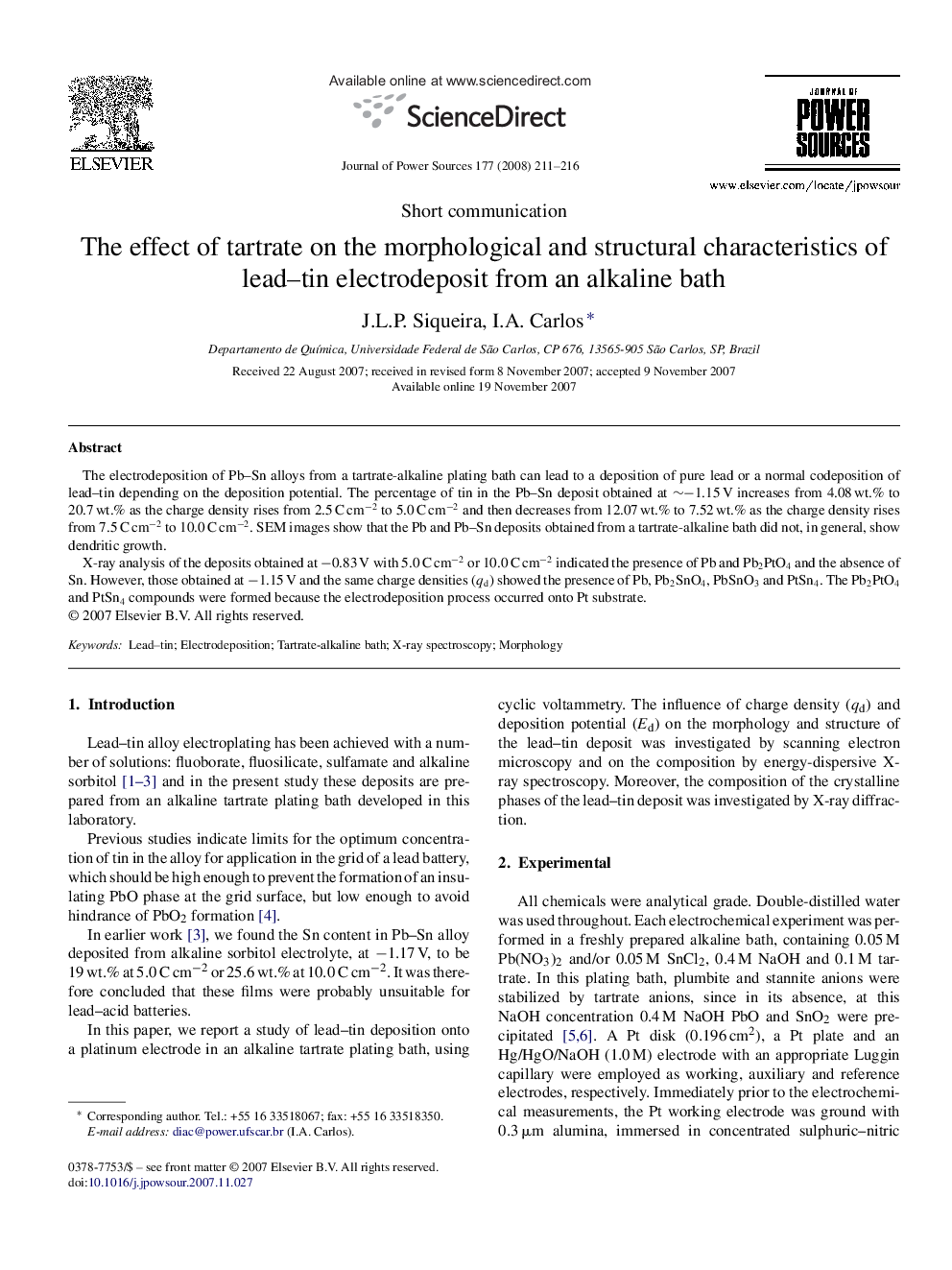| Article ID | Journal | Published Year | Pages | File Type |
|---|---|---|---|---|
| 1285707 | Journal of Power Sources | 2008 | 6 Pages |
The electrodeposition of Pb–Sn alloys from a tartrate-alkaline plating bath can lead to a deposition of pure lead or a normal codeposition of lead–tin depending on the deposition potential. The percentage of tin in the Pb–Sn deposit obtained at ∼−1.15 V increases from 4.08 wt.% to 20.7 wt.% as the charge density rises from 2.5 C cm−2 to 5.0 C cm−2 and then decreases from 12.07 wt.% to 7.52 wt.% as the charge density rises from 7.5 C cm−2 to 10.0 C cm−2. SEM images show that the Pb and Pb–Sn deposits obtained from a tartrate-alkaline bath did not, in general, show dendritic growth.X-ray analysis of the deposits obtained at −0.83 V with 5.0 C cm−2 or 10.0 C cm−2 indicated the presence of Pb and Pb2PtO4 and the absence of Sn. However, those obtained at −1.15 V and the same charge densities (qd) showed the presence of Pb, Pb2SnO4, PbSnO3 and PtSn4. The Pb2PtO4 and PtSn4 compounds were formed because the electrodeposition process occurred onto Pt substrate.
